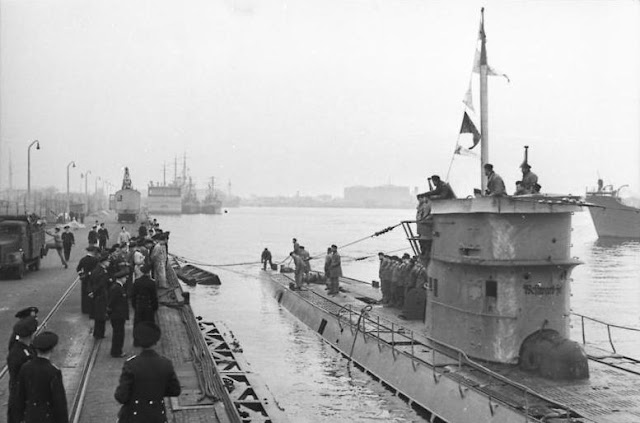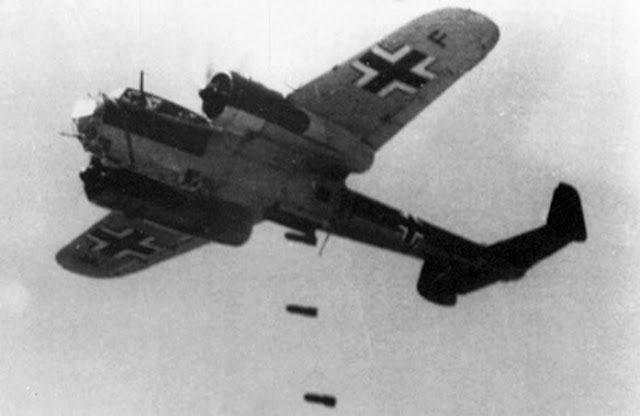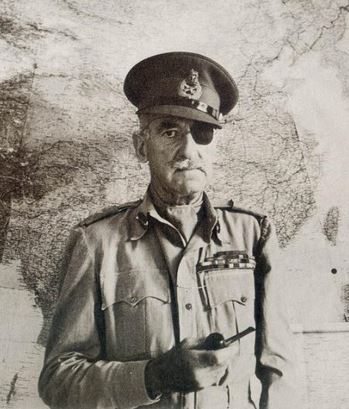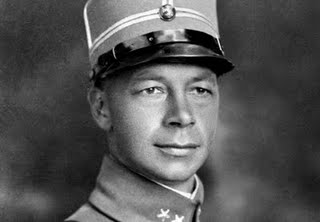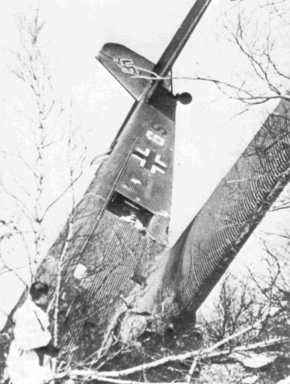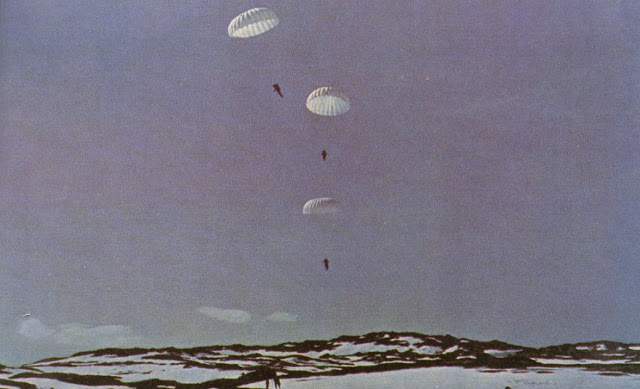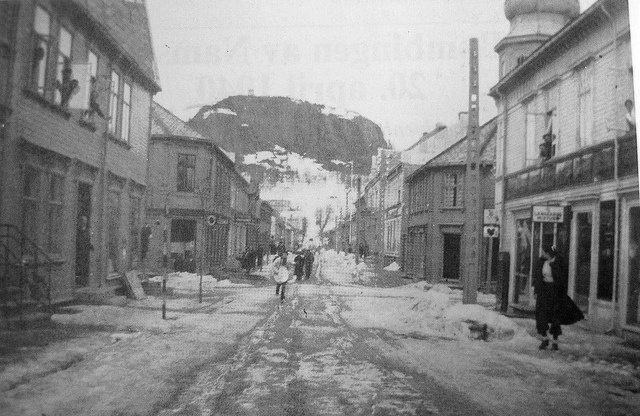Friday 19 April 1940
 |
| Three rare Neubaufahrzeug panzers arrive in Oslo on 19 April 1940. |
The Wehrmacht watches the British troop movements with concern. They land troops near Steinkjer on Trondheim Fjord and prepare to assault the town. This effectively outflanks the British 146th Infantry Brigade (General de Wiart) that has been advancing from Namsos to join the Norwegian forces further south. In addition, the Germans have warships in Trondheim Fjord to support land operations. The British 146th Infantry Brigade also runs into the German 138th Gebirgsjäger Regiment, advancing North from Trondheim and a battle erupts.
At Andalsnes, the British troops (Brigadier Morgan) have two conflicting objectives: move on Trondheim from the south as part of Operation Sickle, and support the Norwegians to their south at Lillehammer. This means moving in opposite directions.
The situation is becoming critical because the advancing German troops of the 196th Infantry Division have captured Hamar and Elverum only 50 miles to the south. As a first step, Morgan sends the 148th Brigade south down the Gudbrandsdal to Lillehammer to protect it. These troops will help General Ruge to block the German troops advancing northward, but it also at the very least delays any British move on Trondheim from the south.
On the most direct road from Oslo to Kristiansund, the Norwegians have blocked the road at Bagn. The Germans are forced to abandon their tanks and proceed on mountain trails to clear the road.
At Hegra Fortress, the fighting settles down after the failed German attacks of the past couple of days. The Germans decide that there is no point in storming the fortress and settle down to a siege, with regular bombardment by artillery and the Luftwaffe.
At Dombås, the Fallschirmjäger force led by Oblt. Herbert Schmidt has been shelled by a 40 mm antiaircraft gun and surrounded by vastly superior Norwegian forces. The Norwegians also have just brought up a rail-mounted howitzer manned by Royal Marines. The howitzer opens fire at 06:00 with an opening barrage of 10 rounds.
At that point, a Junkers Ju 52 arrives overhead. Schmidt radios it and tells it that the Germans are going to surrender, so it leaves without dropping its supplies.
Schmidt then sends out his second-in-command, Leutnant Ernst Mössinger, to see what kind of terms he can get. Norwegian Major Arne Sunde demands unconditional surrender and tells him that they have 10 minutes before he opens fire again. The Germans are to announce their surrender by firing flares. Mössinger returns to the farm, and just before the deadline the Germans fire off the flares.
There are 45 Fallschirmjäger left, of whom 6 are wounded. The captured Germans are transported by train for incarceration at Dombås. The elimination of the Germans at Dombås clears the vital rail line and road junction. It also facilitates the escape route for King Haakon and the rest of the Norwegian government to England via the port of Andalsnes.
Three experimental heavy tanks, Neubaufahrzeug heavy tanks (35 tons, three turrets with 75 mm main and 37 mm secondary gun), arrive by ship in Oslo. They are big and scary looking, but not too imposing as weapons. They are driven around town to impress the locals, then sent to join the forces battling northward.
Norway Air Operations: With the British base at Namsos posing a threat to the German hold on Trondheim, the Luftwaffe sends raids against Namsos. The town suffers tremendous damage.
The RAF continues its daily raids against Stavanger-Sola, sending 9 aircraft to bomb the field.
Battle of the Atlantic: HMS Hickory (Chief Skipper Arthur Pitchers), a minesweeper, is commissioned.
BEF: The British begin moving the 12th Infantry Division to France.
US/Japanese Relations: After recent back and forth between US Secretary of State Cordell Hull and the Japanese Foreign Minister about the possible implications of the European war on the southern Pacific region, the Japanese government officially states that it has no aggressive plans regarding the Dutch East Indies.
Holland: The Dutch government extends the state of siege from just the frontier region to cover the entire country. This creates a form of martial law. The government also reiterates its neutrality.
Yugoslavia: Milan Stojadinović, the former premier, is arrested. The regent prince Paul suspects that he is trying to set himself up as the head of a puppet regime with Axis backing.
German Homefront: With Hitler's birthday on the morrow, Propaganda Minister Goebbels gives a fulsome speech entitled "Our Hitler" in which he states that "We Germans all agree: nothing can separate us from our love, obedience, & confidence in and for the Führer."
British Homefront: "Gone With The Wind" premieres in London four months after its American debut. As a film with an inherently American storyline, it loses something in the translation. About the film, which is now in many Top Ten lists of all time and which still holds the inflation-adjusted box office record, the critics say: "Good, but no masterpiece."
 |
| The New York Central’s Lake Shore LTD, sped around a curve at Little Falls, N.Y., jumped the track, and plowed into a rock wall. Thirty persons were killed in this crash on April 19, 1940. |
April 1940
April 1, 1940: Weserubung is a GoApril 2, 1940: British Subs On Alert
April 3, 1940: Churchill Consolidates Power
April 4, 1940: Missed the Bus
April 5, 1940: Mig-1 First Flight
April 6, 1940: Troops Sailing to Norway
April 7, 1940: Fleets At Sea
April 8, 1940: HMS Glowworm and Admiral Hipper
April 9, 1940: Invasion of Norway
April 10, 1940: First Battle of Narvik
April 11, 1940: Britain Takes the Faroes
April 12, 1940: Germans Consolidate in Norway
April 13, 1940: 2d Battle of Narvik
April 14, 1940: Battle of Dombås
April 15, 1940: British in Norway
April 16, 1940: Germans Cut Norway in Half
April 17, 1940: Trondheim the Target
April 18, 1940: Norway Declares War
April 19, 1940: Dombås Battle Ends
April 20, 1940: Germans Advancing in Norway
April 21, 1940: First US Military Casualty
April 22, 1940: First British Military Contact with Germans
April 23, 1940: British Retreating in Norway
April 24, 1940: British Bombard Narvik
April 25, 1940: Norwegian Air Battles
April 26, 1940: Norwegian Gold
April 27, 1940: Allies to Evacuate Norway
April 28, 1940: Prepared Piano
April 29, 1940: British at Bodo
April 30, 1940: Clacton-on-Sea Heinkel
2019
